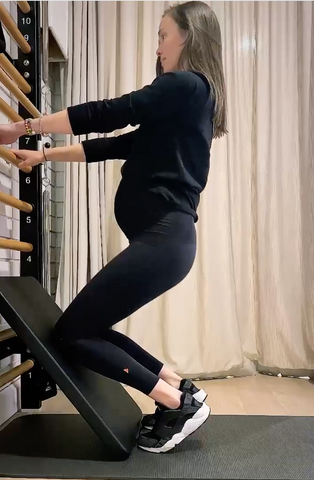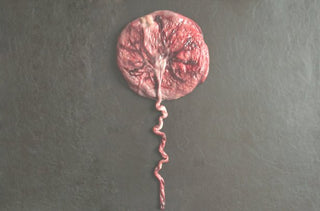4 min read
BY LAUREN BRENTON | Clinical Midwifery Specialist | Childbirth Educator |
Your body goes through miraculous changes during pregnancy, one of which is growing a whole new organ, the placenta. So, what is the placenta and what does it do?
1. WHAT IS THE PLACENTA?
The word placenta comes from the Latin word ‘cake’ which perfectly describes the appearance of the human placenta - round and flat. The placenta in many countries is referred to as the “Tree of Life” because it has a very complex function in growing, developing, and keeping your baby safe. The placenta is the very first organ to be formed during pregnancy and although it is temporary, it has a fundamental role of a lifeline between your blood supply and your baby.
2. WHAT IS THE ROLE & IMPORTANCE OF THE PLACENTA?
- Acting like a lung in the exchange of oxygen and carbon dioxide
The placenta has two separate circulatory systems, as it receives blood supply from both the mum and the baby. This means that the mum’s blood and the baby’s blood don't mix. The umbilical cord is the lifeline that attaches to the placenta and to the baby but does not directly connect to the mum’s circulatory system. The deoxygenated blood flows from the baby to the placenta where it is reoxygenated by the maternal blood flow and then it is returned through the cord to the baby. Exchange of nutrients and oxygen takes place at the placenta so that the baby can have all the oxygen and nutrients it needs to grow.
- Working as a digestive system absorbing all necessary nutrients for baby to grow and develop
The placenta is essential in making sure that the baby can get the nutrients necessary for healthy growth and development. The transfer of nutrients occurs in the same way that oxygen and carbon dioxide are transferred in the placenta. However, if there are not enough nutrients in the maternal blood system, the placenta does not have a good supply of maternal blood or because the placenta is unable to effectively take the nutrients from the maternal circulation to the baby then the baby may become malnourished.
- Functioning as a kidney by removing all the waste from the baby
Waste products, such as carbon dioxide, are transported from the baby through the umbilical cord to the placenta where they are transferred to the mother’s veins and taken away.
- Behaving as an immune barrier that protects the growing foetus
- Producing many hormones and growth factors to regulate the course of the pregnancy and support the baby to grow and be born.
The placenta is responsible for producing and regulating the hormones necessary for pregnancy, including:
- hCG: Production of hCG begins prior to implantation and is the basis for early pregnancy tests.
- Estrogen and progesterone: The placenta produces enough of these hormones to maintain the pregnancy. The combination of estrogen and progesterone circulating in the blood also inhibits milk production until the baby is born.
- Human placental lactogen: This is similar to growth hormone and is important for influencing the baby’s growth, maternal mammary duct production, and lipid and carbohydrate metabolism.
- Human placental growth hormone: The major function of this is to regulate the maternal blood glucose levels.
For all these tasks to be undertaken, the placenta itself must have normal vascular development. If the placenta does not function properly, it may compromise outcomes of the pregnancy for both the mother and the baby.
Some of these complications include pre-eclampsia and intrauterine foetal growth restriction (IUGR).
3. HOW DOES THE PLACENTA HELP THE BABY’S HEALTH

Interestingly, the uterine blood flow through the umbilical cord and placenta can determine the baby’s health. Generally, the more forward blood flow that is seen from the baby to the placenta through the umbilical cord, the healthier the baby.
Reduced blood flow is associated with low birthweight babies. This type of ultrasound is a valuable non-invasive procedure for assessing baby’s well-being during pregnancy.
4. HOW CAN I INCREASE BLOOD FLOW?
Here are 5 tips for increasing your blood flow & circulation

- Graduated compression garments - such as TheRY Saviour Maternity Leggings put pressure to key points on your legs, helping to reduce swelling, discomfort and helping your vessels work better in pushing the blood back to your heart.
- void wearing tight clothing (unless they are graduated compression) as this can restrict the blood flow through your body.
- Avoid standing or sitting for too long, making sure you take regular breaks to stretch your legs or rest.
- Try to exercise for approximately 30 minutes every day to improve your cardiovascular health (with your healthcare professionals’ approval). This can be as simple as a walk or a swim.
- Pregnancy massages can help get blood flowing as well as reducing your stress levels. This is your excuse to treat yourself to a massage.
5. WHAT HAPPENS TO THE PLACENTA AFTER BIRTH?
Known as the third stage of labour, the placenta is delivered from your body following birth. This usually occurs within 5 to 30 minutes following the birth of your baby. You may need to continue to push.
If your baby is delivered by C-section, the doctor will remove the placenta from your uterus before closing the incision in the uterus and stomach
6. IS IT TRUE THAT SOME PEOPLE EAT THEIR PLACENTA?
It was thought that consuming your placenta or encapsulating your placenta, may pass some of the nutrients and health benefits to the mother. This has not been proven in any studies, and studies have shown it can be harmful to both your health and your baby’s health. It is important to talk to your healthcare provider before consuming your placenta.
______________________________________________________________
References:
1. Small for Gestational Age. Health Encyclopedia. University of Rochester Medical Center
2. Mary Mamach MD. Labour and Delivery, Postpartum Care. Mayo Clinic


